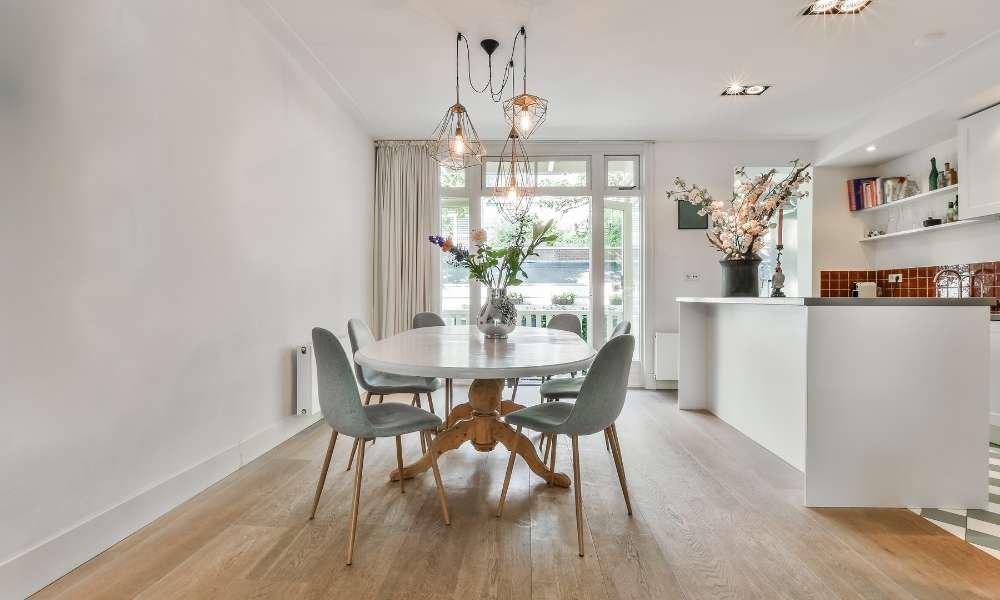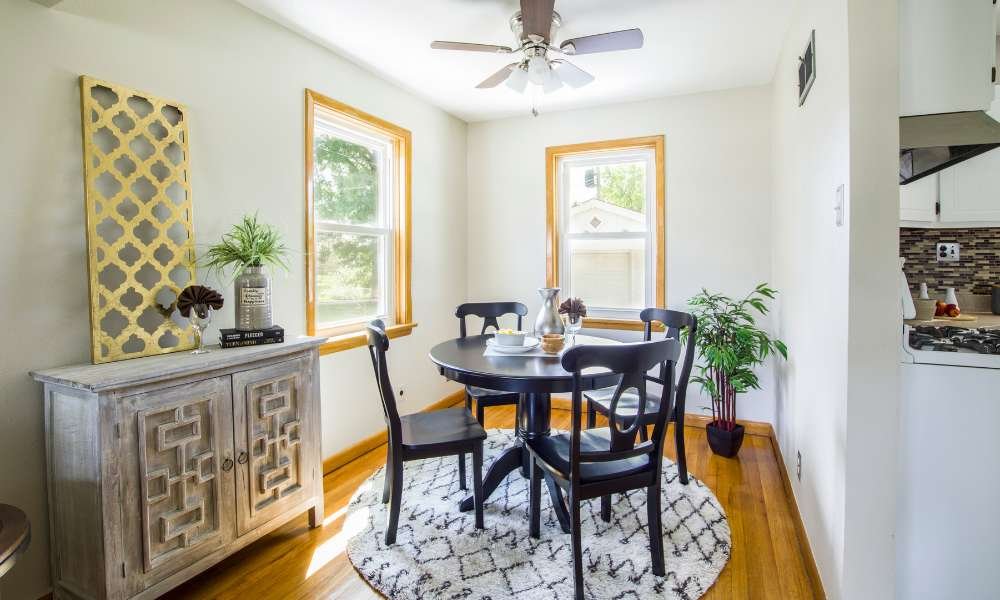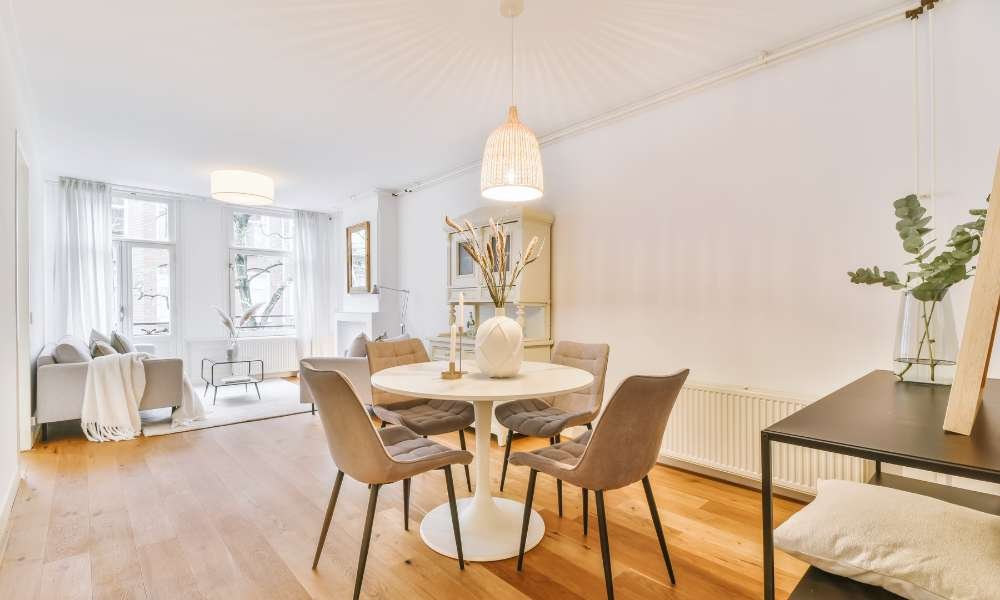Introduction
Embarking on a DIY project to build your own dining room table not only adds a personal touch to your home but also allows you to create a piece that perfectly fits your space and style. This guide provides a comprehensive overview, tailored for both novices and seasoned crafters, on constructing a durable and stylish dining room table. From selecting the right materials to finishing touches, we cover all the essential steps. Whether you’re aiming for a rustic farmhouse aesthetic or a modern minimalist design, follow along to transform simple materials into a beautiful and functional centerpiece for your dining area.
Planning Your Project
Before diving into building your dining room desk, it’s crucial to plan meticulously. Start by selecting a design that complements your dining space, be it a rustic farmhouse, sleek modern, or elegant traditional style. Next, decide on the dimensions; standard sizes may suffice, but custom measurements can be tailored to fit your specific needs. The choice of materials will greatly influence the look and durability of your desk. Opt for quality woods like oak or walnut for longevity, and gather the necessary tools for the job. Thorough planning ensures your project aligns with your vision and practical requirements, setting the stage for successful construction.
Tools and Materials
To build a dining room table that stands the test of time, choosing the right tools and materials is essential. You will need basic tools such as saws for cutting, drills for assembling, and screws to secure joints. The type of wood you select significantly affects both the appearance and durability of your desk. For instance, pine is affordable and easy to work with, making it ideal for those new to woodworking. In contrast, hardwoods like oak and walnut offer superior strength and a rich finish. Don’t forget additional supplies like sandpaper for smoothing surfaces, and varnish or paint to protect and enhance the wood’s natural beauty. Each choice plays a pivotal role in crafting a desk that is both beautiful and functional.
Preparing the Workspace
Setting up a safe and efficient workspace is foundational when building a dining room table. First, prioritize safety by equipping yourself with the necessary gear such as goggles, gloves, and ear protection. Ensure your workspace is well-ventilated and free of clutter to avoid accidents. Organizing your tools and materials is equally important for efficiency. Arrange your workspace in a way that tools are easily accessible and materials are neatly stored to streamline the building process. A well-prepared workspace not only enhances safety but also significantly improves productivity, making your table-building experience smoother and more enjoyable.
Cutting and Assembling the Table Top
Creating a sturdy and attractive table top is a crucial step when building a dining room desk. Start by measuring and cutting the wood accurately. Use a tape measure to ensure precise dimensions, then cut the pieces using a circular saw or desk saw. Next, focus on assembling the pieces using techniques like doweling or biscuit joinery for a secure fit. Doweling involves drilling holes and inserting wooden dowels to connect the pieces, while biscuit joinery uses oval-shaped biscuits in slots for alignment. Both methods create strong joints, ensuring a durable desk top. Taking the time to align and secure the pieces properly guarantees a professional and long-lasting result for your dining room table.
Building the Legs and Frame
Designing and constructing the legs and frame of how to build a dining room table are key to ensuring both style and stability. When choosing the design for the legs, consider various style options such as straight, turned, or tapered legs. Each style can significantly influence the overall aesthetics of the desk. For the frame construction, focus on stability to ensure the table withstands daily use. Use sturdy joints and robust materials to connect the legs and the tabletop securely. Techniques such as mortise and tenon or bracket joints are excellent for enhancing the table’s durability and strength. Thoughtful design and careful construction of the legs and frame are vital for a functional and long-lasting dining table.
Attaching the Table Top and Frame
Securing the table top to the frame is critical for the overall stability and functionality of your dining room table. Utilize best practices in joining methods such as brackets or screws for a sturdy assembly that can handle the stresses of everyday use. When attaching the top to the frame, ensure alignment is precise. Use a level to verify that the surface is even, adjusting as necessary to avoid any wobble or tilt. Properly aligning and securing the desk top to the frame not only enhances the table’s durability but also ensures a professional finish to your DIY project. This careful attention to detail will result in a dining table that is both beautiful and built to last.
Finishing Touches
Applying the finishing touches is essential for both the appearance and durability of your dining room desk. Start by sanding the surface using progressively finer sandpaper for a smooth finish. This process eliminates any rough edges or imperfections, creating a clean surface ready for finishing. Next, consider staining and sealing the wood. Choose a stain that complements your decor and highlights the wood’s natural beauty. Apply the stain evenly, then seal the desk with a protective coat to guard against moisture and wear. These final steps not only enhance the table’s aesthetics but also protect it, ensuring your dining room desk remains a cherished centerpiece for years to come.
Custom Features and Personalization
Enhancing your dining room desk with custom features and personalization adds both functionality and unique style. Consider incorporating drawers or extensions to improve utility. Drawers offer convenient storage for dining essentials, while extensions can adapt the table size for different occasions. For a personal touch, explore decorative details such as carving, painting, or inlaying. Carving can give the table a traditional feel, painting allows for color coordination with your dining room decor, and inlaying introduces sophisticated patterns or designs. These customizations not only make your desk unique but also enhance its practicality and aesthetic appeal, creating a truly one-of-a-kind centerpiece for your home.
Final Assembly and Quality Check
Assembling all components is the culmination of your dining room desk-building journey. Ensure everything fits perfectly by meticulously aligning each piece, from the legs to the tabletop. Double-check joints and connections for stability and security. Once assembled, conduct a thorough inspection, scrutinizing every inch for imperfections. Look for any uneven surfaces, loose joints, or blemishes that could compromise the table’s integrity. Address any issues promptly to guarantee a flawless finish. This final quality check ensures your DIY dining desk not only looks stunning but also stands the test of time, becoming a cherished centerpiece in your home.
Care and Maintenance
Proper care and maintenance are essential for preserving the beauty and longevity of your dining room desk. Protect your table by using coasters and placemats to prevent scratches and water damage. Regularly dusting with a soft cloth keeps the surface clean and free from debris. For deeper cleaning, use a mild soap and water solution, avoiding harsh chemicals that can damage the wood. Apply furniture polish or wax periodically to nourish and protect the wood’s finish. By incorporating these simple care routines into your cleaning regimen, you can ensure your dining table remains a stunning centerpiece in your home for years to come.
Conclusion
Building your own how to build a dining room table is a rewarding endeavor that allows you to create a custom piece tailored to your style and needs. Throughout this guide, we’ve covered essential steps, from planning and selecting materials to assembly and finishing touches. Remember, don’t be afraid to personalize your project with unique features or decorative details. We invite you to share your DIY dining desk projects with us and the community. Whether you’re a seasoned woodworker or just starting out, crafting your own dining table is a fulfilling experience that will enhance your home for years to come.



